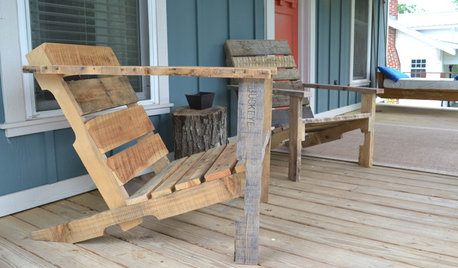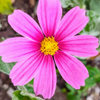It can be fun to breed your own zinnias - Part 27
zen_man
9 years ago
Related Stories

PETSWhat Chihuahuas Can Teach Us About Interior Design
Who knew these tiny dogs could be such a huge fount of design tips? Houzzers did
Full Story
WOODWORKINGBuild Your Own Wooden Deck Chair From a Pallet — for $10!
Take the ecofriendly high road with a low-cost outdoor chair you make yourself
Full Story
GARDENING GUIDES10 Tips to Start a Garden — Can-Do Ideas for Beginners
Green up your landscape even if you're short on time, money and knowledge, with these manageable steps for first-time gardeners
Full Story
HOUZZ TVHouzz TV: This Dream Midcentury Home in a Forest Even Has Its Own Train
Original wood ceilings, a cool layout and, yes, a quarter-scale train persuaded these homeowners to take a chance on a run-down property
Full Story
INSPIRING GARDENSWhat We Can Learn From Longwood Gardens’ New Meadow
Sustainability, ecology, native plant communities ... this public garden is brimming with lessons on horticulture for home gardeners
Full Story
LAUNDRY ROOMSThe Cure for Houzz Envy: Laundry Room Touches Anyone Can Do
Make fluffing and folding more enjoyable by borrowing these ideas from beautifully designed laundry rooms
Full Story
PETS5 Finishes Pets and Kids Can’t Destroy — and 5 to Avoid
Save your sanity and your decorating budget by choosing materials and surfaces that can stand up to abuse
Full Story
MOST POPULAR9 Real Ways You Can Help After a House Fire
Suggestions from someone who lost her home to fire — and experienced the staggering generosity of community
Full Story
40 Fun Gifts for Your Pet-Loving Friends
Houzz Gift Guide: 40 New Ways to Love Dogs, Cats and Birds in Style
Full Story
GARDENING FOR BUTTERFLIESA Quick-Start Guide to Bird-Watching for Fun and Learning
Set out some seed and grab your field guide. Bird-watching is an easy, entertaining and educational activity for the whole family
Full Story







queen_gardener
zen_manOriginal Author
Related Professionals
Winder Landscape Architects & Landscape Designers · Westwood Landscape Contractors · Wilmington Landscape Contractors · Dixon Landscape Contractors · Hilo Landscape Contractors · Midland Landscape Contractors · North Canton Landscape Contractors · Streamwood Landscape Contractors · La Vista Driveway Installation & Maintenance · Raynham Driveway Installation & Maintenance · Crestwood Driveway Installation & Maintenance · Athens Decks, Patios & Outdoor Enclosures · Boise Decks, Patios & Outdoor Enclosures · Boston Decks, Patios & Outdoor Enclosures · Riverside Decks, Patios & Outdoor Enclosuressamhain10 - 5a
zen_manOriginal Author
zen_manOriginal Author
samhain10 - 5a
zen_manOriginal Author
samhain10 - 5a
samhain10 - 5a
zen_manOriginal Author
mister_guy
samhain10 - 5a
zen_manOriginal Author
zen_manOriginal Author
samhain10 - 5a
mister_guy
samhain10 - 5a
mister_guy
fullmoon13
zen_manOriginal Author
samhain10 - 5a
fullmoon13
zen_manOriginal Author
woodnative
zen_manOriginal Author
Irie.Island.Farmer
samhain10 - 5a
zen_manOriginal Author
samhain10 - 5a
zen_manOriginal Author
queen_gardener
zen_manOriginal Author
queen_gardener
zen_manOriginal Author
zen_manOriginal Author
samhain10 - 5a
zen_manOriginal Author
samhain10 - 5a
zen_manOriginal Author
samhain10 - 5a
zen_manOriginal Author
samhain10 - 5a
mister_guy
samhain10 - 5a
zen_manOriginal Author
samhain10 - 5a
zen_manOriginal Author
samhain10 - 5a
zen_manOriginal Author
zen_manOriginal Author